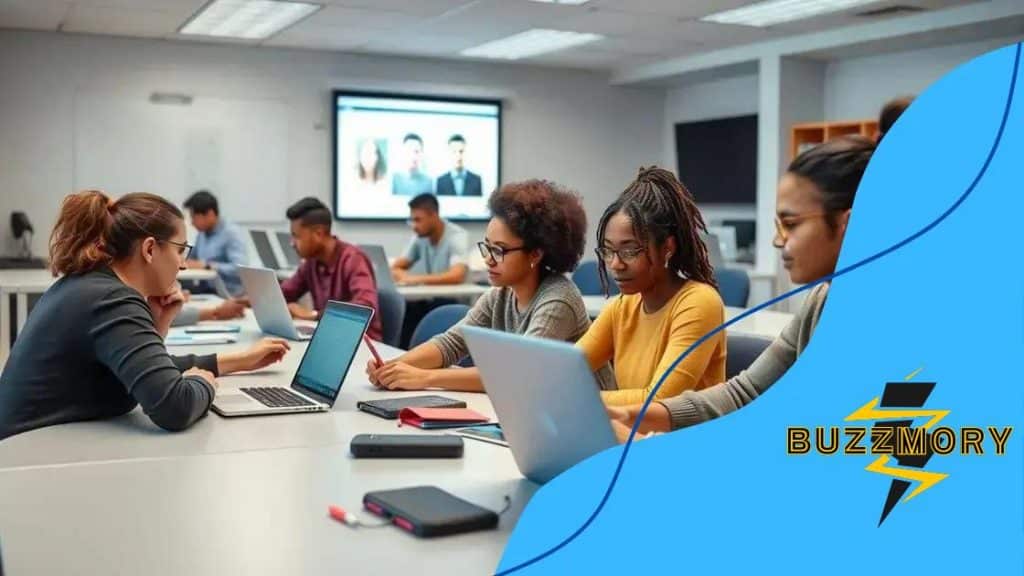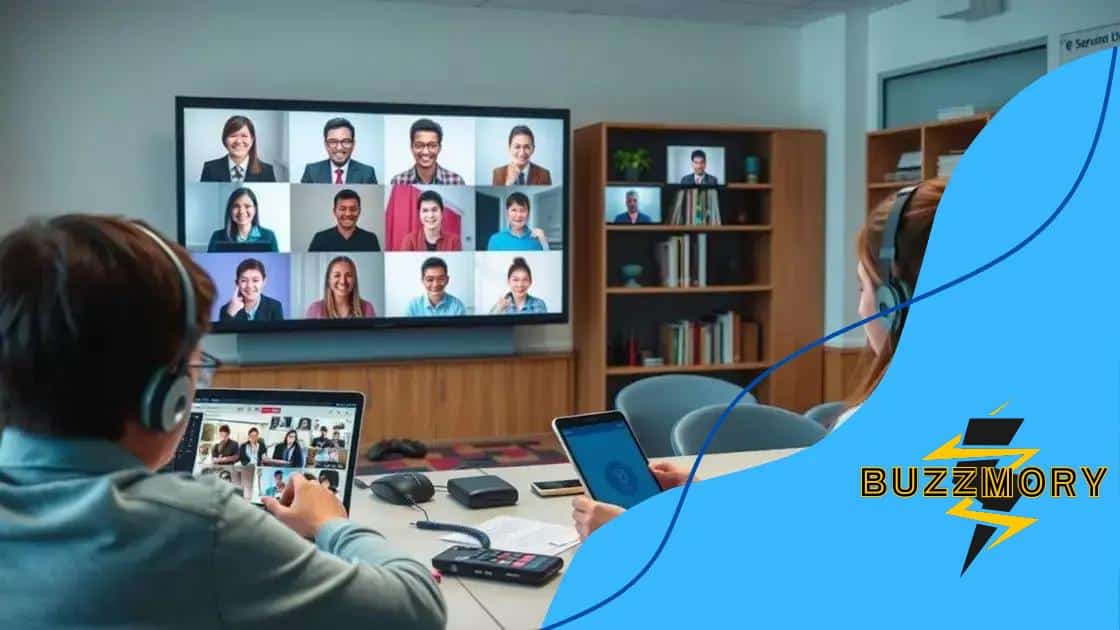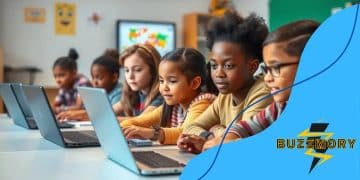The future of remote learning in higher education

The future of remote learning in higher education includes enhanced personalization through AI, the integration of advanced technologies like VR and AR, and the facilitation of global collaboration among students.
The future of remote learning in higher education is here, reshaping how we think about education. Have you ever wondered how these changes impact your learning experience? In this article, we delve into the evolving landscape of remote education.
The rise of online learning platforms
The rise of online learning platforms has changed the way students access education. With just a few clicks, anyone can dive into new subjects from the comfort of their home. This shift is not just about convenience; it reshapes the learning experience itself.
Benefits of Online Learning
Many learners appreciate the flexibility that these platforms provide. Students can study at their own pace, which is especially useful for working adults. They can revisit lectures, complete assignments when it’s convenient, and balance their personal commitments.
- Access to a wide range of courses
- Learning from expert instructors globally
- Cost-effective alternatives to traditional education
- Engaging multimedia content that enhances understanding
Moreover, the variety of interactive tools makes learning engaging. Features like discussion boards, quizzes, and live sessions promote a sense of community, even if it’s virtual. For many, this interaction with peers and instructors can lead to a more supportive learning environment.
Challenges of Online Learning
Despite the advantages, there are challenges too. Some students struggle with self-discipline in a virtual setting. The lack of face-to-face interaction can also lead to feelings of isolation. It’s important for students and educators to find ways to overcome these barriers.
Additionally, not all learners have equal access to technology. This digital divide can hinder the effectiveness of online platforms. Addressing these issues is crucial to ensure that everyone can benefit from this new wave of education.
As we look to the future, the integration of technology in education will only grow. The use of virtual reality (VR), augmented reality (AR), and artificial intelligence (AI) will likely enhance the online learning experience further, making it more immersive and tailored to individual needs.
Benefits of remote learning for students
One of the biggest benefits of remote learning for students is the flexibility it offers. Students can create a schedule that fits their lifestyle, allowing them to balance education with other responsibilities. This makes learning more accessible than ever before.
Personalized Learning Experience
Another significant advantage is that remote learning can be tailored to individual needs. Students can choose courses that match their interests and learn at their own pace. This personalized approach leads to better engagement and retention of information.
- Ability to access various learning materials
- Option to revisit lectures for better understanding
- Customized study schedules
- Flexibility to study from anywhere
Furthermore, remote learning enables students to develop essential skills for the future. Skills such as self-discipline, time management, and digital literacy are enhanced through online learning environments. These abilities are crucial for success in both academic and professional settings.
Broader Course Selection
In traditional classrooms, students may be limited to the courses offered at their local institutions. However, with remote learning, they can explore a wide range of subjects from various universities globally. This access broadens their horizons and opens up new opportunities.
Collaboration is another key benefit. Many online platforms offer opportunities to connect with peers and instructors, forming networks that can be valuable in the future. Group projects, discussions, and forums encourage interaction, fostering a sense of community despite being physically apart.
Challenges faced by educators

While remote learning brings many benefits, there are also significant challenges faced by educators. Adapting to new technology can be overwhelming, even for experienced teachers. Many educators must navigate various online tools while maintaining student engagement.
Technology Barriers
One major hurdle is the reliance on technology. Not all educators have access to the necessary resources, such as reliable internet or advanced software. This digital divide can create disparities between different learning environments.
- Limited access to technology for some teachers
- Lack of training in new digital tools
- Time-consuming tech troubleshooting
- Difficulty in keeping up with evolving educational technology
In addition to technology, maintaining student motivation can be challenging. Some students may struggle with self-discipline in a virtual setting. This can lead to lower participation rates, which in turn affects the overall learning experience.
Engagement Strategies
To combat these issues, educators must develop creative strategies to engage students. This includes using multimedia resources and interactive activities. Engaging students through video, quizzes, and discussions can help maintain interest and participation.
Moreover, the absence of face-to-face interaction may hinder relationship-building. Teachers often find it difficult to connect with students on a personal level without in-person contact. Establishing rapport is essential for supporting student learning and emotional well-being.
Emerging technologies in education
Emerging technologies in education are transforming the way students learn and teachers teach. Technologies such as artificial intelligence (AI), virtual reality (VR), and augmented reality (AR) are being integrated into classrooms to enhance the educational experience. These innovations create more engaging and interactive learning environments.
Artificial Intelligence in Education
AI plays a crucial role in personalizing education. It analyzes student data to provide tailored learning experiences. This technology helps identify areas where students may struggle and offers resources to support their learning.
- Adaptive learning platforms that adjust to student needs
- AI-powered tutoring systems for personalized assistance
- Automated grading systems to save teachers time
- Data analytics to track student progress
The integration of AI not only enhances learning but also boosts educators’ effectiveness. By automating administrative tasks, teachers can focus more on instruction and student interaction.
Virtual and Augmented Reality
Virtual reality (VR) and augmented reality (AR) provide immersive experiences that traditional learning methods often lack. Students can explore different environments and concepts in a way that makes learning exciting.
For instance, VR allows students to take virtual field trips to historical sites or explore the human body in 3D. This hands-on approach helps to reinforce concepts and improve retention. AR can overlay information onto the real world, making subjects like science and math come to life in the classroom.
These technologies not only enhance understanding but also cater to various learning styles. Kinesthetic learners, for example, benefit greatly from interactive experiences, as they engage more fully with the material.
Future predictions for remote learning
The future of remote learning is filled with exciting possibilities as technology continues to evolve. With ongoing advancements, we can expect a more personalized and engaging educational experience for students everywhere. Educators and institutions will play a crucial role in shaping this future as they adapt to new tools and methods.
Enhanced Personalization
One significant prediction is the rise of even more personalized learning experiences. As data analytics and AI improve, educational platforms will be able to tailor content to meet individual student needs. This could mean customized pacing, unique learning paths, and targeted resources that help students thrive.
- Adaptive learning systems that respond to student performance
- Learning plans designed based on students’ strengths and weaknesses
- Greater focus on student preferences and interests
- Instant feedback mechanisms to aid learning
Such personalization will cater to diverse learning styles, ensuring that every student can achieve their full potential in a remote setting.
Integration of Advanced Technologies
We can also expect a surge in the use of advanced technologies in remote education. Virtual reality (VR) and augmented reality (AR) will likely become commonplace, allowing students to engage in immersive experiences that traditional methods cannot replicate. For example, students could explore historical events through VR or conduct science experiments in an AR environment.
Moreover, the use of gamification in education will continue to grow. Fun and interactive elements can make learning more appealing and motivate students to participate actively. This approach can significantly improve retention as students engage with the material in new and exciting ways.
Global Learning Communities
The future may also see the formation of global learning communities where students from different countries collaborate on projects. This cross-cultural exchange enriches the learning experience by exposing students to diverse perspectives and ideas.
As institutions embrace global connectivity, students will benefit from shared knowledge and experiences that span continents. This connectivity can create a sense of belonging and community among learners, even if they are miles apart.
FAQ – Frequently Asked Questions About the Future of Remote Learning
How does remote learning improve accessibility?
Remote learning allows students to access education from anywhere, removing barriers like transportation and geographical limitations.
What role does technology play in remote education?
Technology enhances remote education through tools like AI, VR, and AR, creating engaging and personalized learning experiences.
What are the benefits of using AI in education?
AI personalizes learning by adapting to individual student needs, providing targeted resources, and offering real-time feedback.
How can remote learning foster global collaboration?
Remote learning enables students from different countries to work together on projects, sharing diverse perspectives and experiences.





